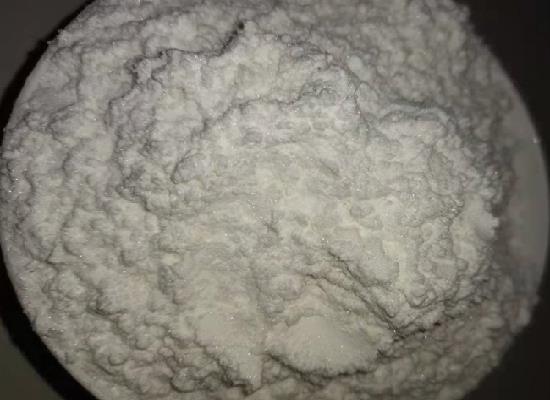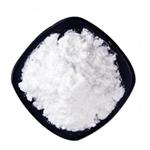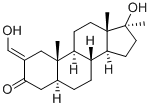Oxymetholone: Mechanism of Action, Side Effects and Dosage
Mar 22,2024
General Description
Oxymetholone, a synthetic derivative of testosterone, functions as a 17 alpha-alkylated anabolic-androgenic steroid used to treat anemias caused by deficient red cell production. Its mechanism of action involves targeting muscle wasting by activating androgen receptors directly or through conversion to DHT and estradiol. However, its use is associated with various side effects, including hepatotoxicity, peliosis hepatis, hepatic tumors, clotting factor alterations, and common anabolic-androgenic steroid side effects. Dosage recommendations for Oxymetholone in anemia treatment range from 1 to 5 mg/kg per day, with individualized adjustments and monitoring essential for optimal therapy outcomes. Regular monitoring of liver function and awareness of potential side effects are crucial when using Oxymetholone or similar steroids.

Figure 1. Oxymetholone
Mechanism of Action
Oxymetholone, a synthetic derivative of testosterone, functions as a 17 alpha-alkylated anabolic-androgenic steroid. It exerts its anabolic effects by primarily targeting muscle wasting, particularly in HIV patients. The mechanism of action of Oxymetholone involves the activation of androgen receptors directly or via conversion to dihydrotestosterone (DHT), as well as through the conversion to estradiol and activation of specific estrogen receptors. Upon entering target tissue cells, free testosterone (T) can bind to androgen receptors or be transformed into DHT by the enzyme 5α-reductase. DHT exhibits even greater affinity for the androgen receptor compared to T, resulting in higher androgenic potency. The complex formed by the binding of T or DHT to the androgen receptor undergoes structural modifications, enabling it to translocate into the cell nucleus and bind to specific nucleotide sequences on DNA known as hormone response elements (HREs). This binding influences the transcriptional activity of select genes, thereby producing the desired androgenic effects. 1
Side Effects
The use of Oxymetholone, like other 17a-alkylated anabolic-androgenic steroids, is associated with various side effects. One significant adverse effect is hepatotoxicity, characterized by cholestatic jaundice, which is dependent on both dosage and duration of use. Although functional liver failure and hepatic necrosis have not been observed with Oxymetholone alone, oral preparations of this steroid have higher hepatotoxicity compared to injectable forms due to increased drug concentrations reaching the liver during first-pass metabolism. Another rare but potentially life-threatening side effect is peliosis hepatis, a cystic lesion of the liver. Its occurrence may be of greater concern after discontinuation of Oxymetholone treatment. The use of 17a-alkylated anabolic-androgenic steroids has also been associated with the development of benign and malignant hepatic tumors, with the incidence increasing in relation to the duration and extent of exposure. Tumor regression can occur upon cessation of steroid therapy. Furthermore, Oxymetholone can cause decreased anticoagulant tolerance, affecting clotting factors and leading to increased fibrinolytic activity. Careful monitoring and testing are required when using anticoagulants alongside Oxymetholone. Common side effects of anabolic-androgenic steroids, including Oxymetholone, include acne, hirsutism, hair loss, voice changes, clitoral/phallic enlargement, gynecomastia, altered libido, and sexual potency. These steroids may also interfere with thyroid function, impair carbohydrate metabolism, and accelerate bone maturation, potentially resulting in growth impairment. While many of these side effects are reversible upon discontinuation, some, such as growth impairment and certain physical changes, may be irreversible. Regular monitoring of liver function and awareness of potential side effects are important for physicians prescribing Oxymetholone or other anabolic-androgenic steroids. 2
Dosage
Oxymetholone is prescribed for treating anemias resulting from deficient red cell production, including acquired aplastic anemia, congenital aplastic anemia, myelofibrosis, and hypoplastic anemias linked to myelotoxic drug use. The recommended daily dosage of Oxymetholone ranges from 1 to 5 mg/kg of body weight per day for both children and adults with these types of anemias. Typically, the effective dose falls between 1 to 2 mg/kg daily, but higher doses may be necessary, tailored to individual needs. It's important to note that the response to treatment may not occur immediately, requiring a minimum trial period of 3 to 6 months. Following remission, some patients may no longer need Oxymetholone therapy, while others may require a reduced maintenance dose, particularly those with congenital aplastic anemia. Regular monitoring and adjustment of the dosage are essential for optimal management of anemia with Oxymetholone. 2
Reference
1. Oxymetholone. Drugbank. DrugBank Accession Number: DB06412.
2. Pavlatos AM, Fultz O, Monberg MJ, Vootkur A, Pharmd. Review of oxymetholone: a 17alpha-alkylated anabolic-androgenic steroid. Clin Ther. 2001;23(6):789-771.
- Related articles
- Related Qustion
- Oxymetholone: pharmacokinetics and clinical applications Sep 26, 2023
Oxymetholone is a potent anabolic steroid with minimal drug interactions. It has shown efficacy in treating anemia, HIV-related wasting, and impaired growth in children.
- Oxymetholone - Medical uses, Mechanism of Toxicity and Environmental Fate Oct 29, 2021
Oxymetholone, marketed as Anadrol, is a synthetic anabolic steroid developed in 1960s. Its primary clinical applications include treatment of osteoporosis and anemia, as well as stimulating muscle growth.
Oxymetholone
434-07-1You may like
- Oxymetholone / Anadrol
-

- $45.00 / 1Box
- 2024-04-29
- CAS:434-07-1
- Min. Order: 1Box
- Purity: 99.99%
- Supply Ability: 10000000000
- Oxymetholone
-

- $1100.00 / 1kg
- 2024-04-29
- CAS:434-07-1
- Min. Order: 1kg
- Purity: 98%
- Supply Ability: 1000kg
- Oxymetholone; Anadrol
-

- $60.00 / 1kg
- 2024-04-29
- CAS:434-07-1
- Min. Order: 1kg
- Purity: 99.99%
- Supply Ability: 500kg




